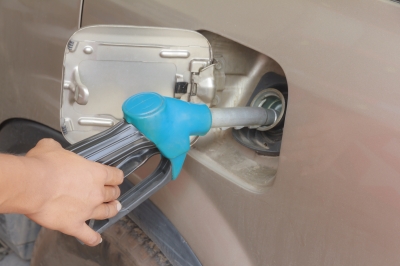 All over the world, the consumption of fossil fuels increases on a daily basis. As vehicles become more available to the global community, more gasoline or diesel is needed to keep those vehicles running. While there is debate about the extent of damage fossil fuel use does to the environment, we do know that there is damage done. There are some things you can do to reduce your carbon footprint. In addition to protecting the environment, this can also save you money on fuel.
All over the world, the consumption of fossil fuels increases on a daily basis. As vehicles become more available to the global community, more gasoline or diesel is needed to keep those vehicles running. While there is debate about the extent of damage fossil fuel use does to the environment, we do know that there is damage done. There are some things you can do to reduce your carbon footprint. In addition to protecting the environment, this can also save you money on fuel.
What is a carbon footprint?
The first thing you should know is what the term "carbon footprint" means. A carbon footprint is a measurement of the effect that a person's activities, like fuel consumption, have on the environment. It is determined by measuring the amount of carbon dioxide you create through heating your home, driving your vehicle, etc. You can figure out your own carbon footprint at www.carbonfootprint.com. Just click on the carbon footprint calculator.
Reducing fuel consumption
The best way to reduce your carbon footprint when moving is to find ways to limit your fuel consumption. You might be surprised how much fuel can be saved by following a few simple tips. Of course, saving fuel is also going to save you money, so even if you're not convinced about the damage fossil fuel does to the environment, these tips still apply.
Tips for drivers
Driving is the first place to start when thinking about reducing your move's carbon footprint. Whether you're driving your own vehicle or a moving truck to your new home, there are a lot of things you can do to limit the amount of fuel you use. Here are some ideas:
- Slow down - Reducing your speed makes your fuel economy improve exponentially.
- Check your tire pressure - If your tires don't have enough air in them, your gas mileage will decrease. You should check your tire pressure at least once a month and especially before a long trip.
- Check the air filter - A dirty air filter causes poor vehicle performance. If you see a buildup of dirt or dust on your air filter, you know it's time to change it.
- Get a tune up - Getting a tune up before your move will ensure that your vehicle is in top-working order while you travel. This is especially important for long-distance moves.
- Go easy on the gas pedal - Accelerating unnecessarily and too often, greatly increases fuel use.
- Air conditioning - Running the air conditioning when driving at slower speeds (about 45 mph or less) reduces fuel efficiency, so when you're driving slower you should roll down your windows rather than run the air conditioning.
- Plan your route - By planning out your route in advance, you can increase fuel efficiency by taking a path that is direct and has few stops.
- Shuttles - Shuttle runs use a lot of extra fuel because movers are making several short trips from your home to the larger moving truck. If possible, arrange for the large moving truck to be parked directly outside of your home so that shuttle runs aren't necessary.
Reducing your carbon footprint at home
The next place to look at when trying to reduce your carbon footprint is your new home. There are many things you can do around the house to keep fuel consumption to a minimum and to make the most out of the energy you use.
- Eco-friendly cleaning products - When you purchase cleaning products for your new home, you should select only those that don't harm the environment.
- Organic products - Purchasing organic products (food, clothing, toys, etc.) for your new home will go a long way toward reducing your carbon footprint.
- Limit usage of electricity and fuel - Turn off lights and electronics when you aren't home and turn the heat or air conditioning off as well.
- Doors and windows - Make sure the seals on all doors and windows in your new home are in working condition. You may also want to consider purchasing doors and windows that are energy efficient.
- Energy Star - When looking for appliances and electronics for your new home look for the Energy Star seal. Energy Star is a government program that certifies energy saving products and processes.
Did You Know?
Most heating and cooling systems allow you to set up an automated program that will turn the heat or air conditioning on or off at specified times during the day.
Recycle
Limiting the amount of waste that is placed in landfills will help to reduce your carbon footprint. Recycling is a great way to do this. Find out your new town's recycling process so that you can best take advantage of it. You should know exactly what you can recycle, how to do it, where to do it, and what day of the week recycling will be picked up at your home.
New developments are frequently being made in the areas of recycling and fuel efficiency. There are many magazines, environmental journals, and websites that you can follow to keep yourself updated on these developments. Doing this will help you to better take advantage of all of the techniques and technologies that are aimed at helping you reduce your carbon footprint.
Photo by: JK199 (Freedigitalphotos.net)